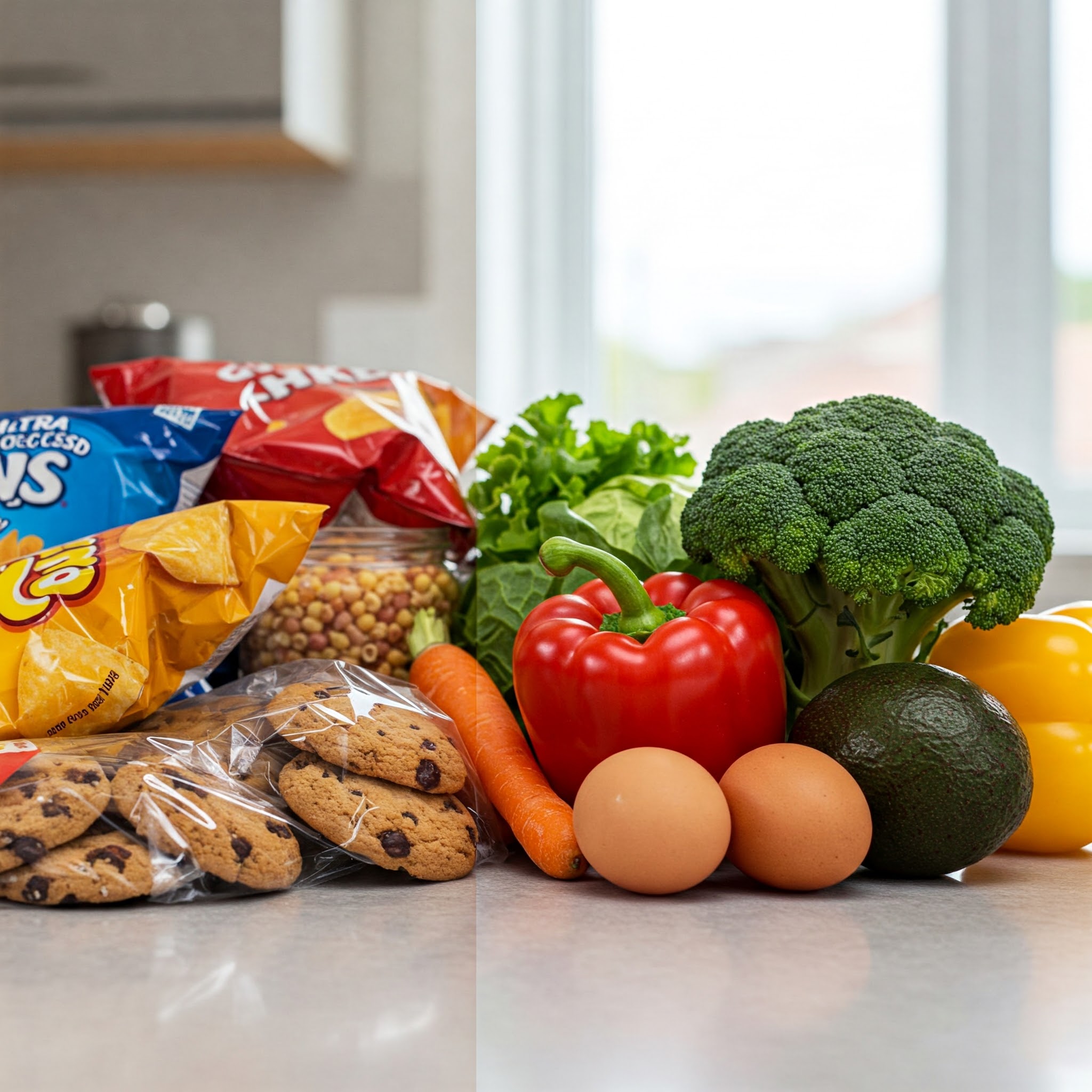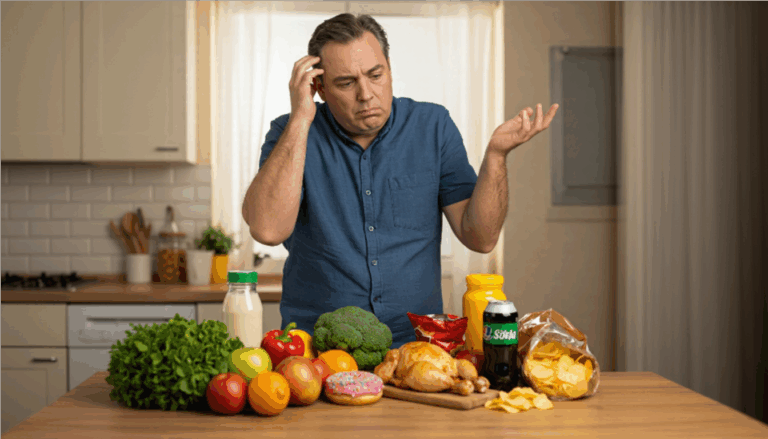What IS Real Food? (It’s Simple!)
Hey there!
Healthy eating can feel like navigating a minefield lately. Low-carb clashes with plant-based. Paleo argues with the next new trend. It’s often just a confusing tangle of advice pulling you in opposite directions. Instead of getting caught in the crossfire, let’s talk about what is real food – maybe that’s the simple starting point we’re missing.
Now, “real food” might sound like another buzzword, maybe something expensive or complicated. But honestly? It’s the total opposite. It’s about getting back to basics in a way that can genuinely change how you feel day-to-day.
What Does “Real Food” Actually Mean?
So, what am I even talking about when I say “real food”? Think about food that hasn’t been messed with too much. Food that’s pretty close to how nature made it. An apple? That’s real food – the ingredient list is just “apple.” Same for a piece of chicken, some broccoli, or a handful of almonds. If there is a label, it’s usually dead simple.
Here’s a fun way I like to think about it: would my great-grandma recognize this as food? Back then, they ate meat, fish, eggs, vegetables, fruits, nuts – stuff humans have eaten forever. That fluorescent orange cheesy cracker snack in the crinkly bag? Probably wouldn’t ring a bell! Real food generally grew on a plant or came from an animal, and not that long ago.
Sure, some changes are fine – plain yogurt needs bacteria, butter needs churning, olives get pressed into oil, veggies get frozen. That’s okay! The key is these processes usually don’t involve adding a science lab’s worth of chemicals, weird fats, or tons of sugar just to make it taste a certain way or last on a shelf for years.
Spotting the Imposters: Processed & Ultra-Processed Foods
That brings us to the other stuff – the processed and especially the ultra-processed foods. This is the food that’s seen the inside of a factory more than a field. It’s often made from things that started as food but have been broken down and rebuilt with stuff like strange syrups, modified starches, hydrogenated oils (those are the bad trans fats!), and a whole cocktail of artificial flavors, colors, preservatives, and texture-enhancers.

How do you spot these? Well, flip over the brightly colored box or crinkly bag. If you see an ingredient list a mile long, full of words you can’t pronounce or wouldn’t find in your own kitchen cupboard – that’s a pretty big clue! Look for sugar hiding under different names high up on the list, refined white flour (where the good stuff’s been stripped out), those unhealthy “hydrogenated” oils, or just a general overload of additives. Often, the real tip-off is that it barely resembles anything natural anymore.
Why Choose Real? The Difference it Makes
Okay, but why does this even matter? Why choose the apple over the gummy snack? It really comes down to what you’re actually fueling your body with. Real foods are packed with the good stuff – the vitamins, minerals, quality protein, healthy fats, and fiber your body actually needs to build things, create energy, feel satisfied, and just plain work well.
Ultra-processed foods, on the other hand, often give you plenty of calories but almost none of those essential nutrients. They can send your blood sugar on a rollercoaster (leading to energy crashes and cravings), promote inflammation, and lack the basic building blocks your body is crying out for. Some researchers think they’re even engineered to make you bypass your natural “I’m full” signals, making it super easy to eat way too much without realizing it.
Easy Ways to Bring More Real Food In
So, how can you start shifting towards more real food without feeling overwhelmed? It’s not about perfection! Just start noticing.
Maybe get curious about labels next time you’re shopping – short lists with recognizable names are your friends. You could try the classic trick of shopping mostly around the edges of the grocery store, where the fresh stuff usually lives. Honestly though, one of the biggest wins is simply cooking more at home whenever you can. That way, you control what goes in. Think about building meals around simple, single ingredients – chicken, fish, eggs, beans, lentils, potatoes, greens, fruit, nuts.
See? It doesn’t have to be some complex diet doctrine. It’s just choosing food that’s closer to nature. It’s nourishment over mere convenience. It’s giving your body what it actually understands. Start small, make a swap here and there. Your energy levels and overall well-being might just surprise you. Give it a shot – what have you got to lose?
Sources used:
The Obesity Fix: How to Beat Food Cravings, Lose Weight and Gain Energy
by Dr. James DiNicolantonio and Siim Land
The Longevity Solution: Rediscovering Centuries-Old Secrets to a Healthy, Long Life
by Dr. James DiNicolantonio and Dr. Jason Fung
Superfuel: Ketogenic Keys to Unlock the Secrets of Good Fats, Bad Fats, and Great Health
by Dr. James DiNicolantonio and Dr. Joseph Mercola


